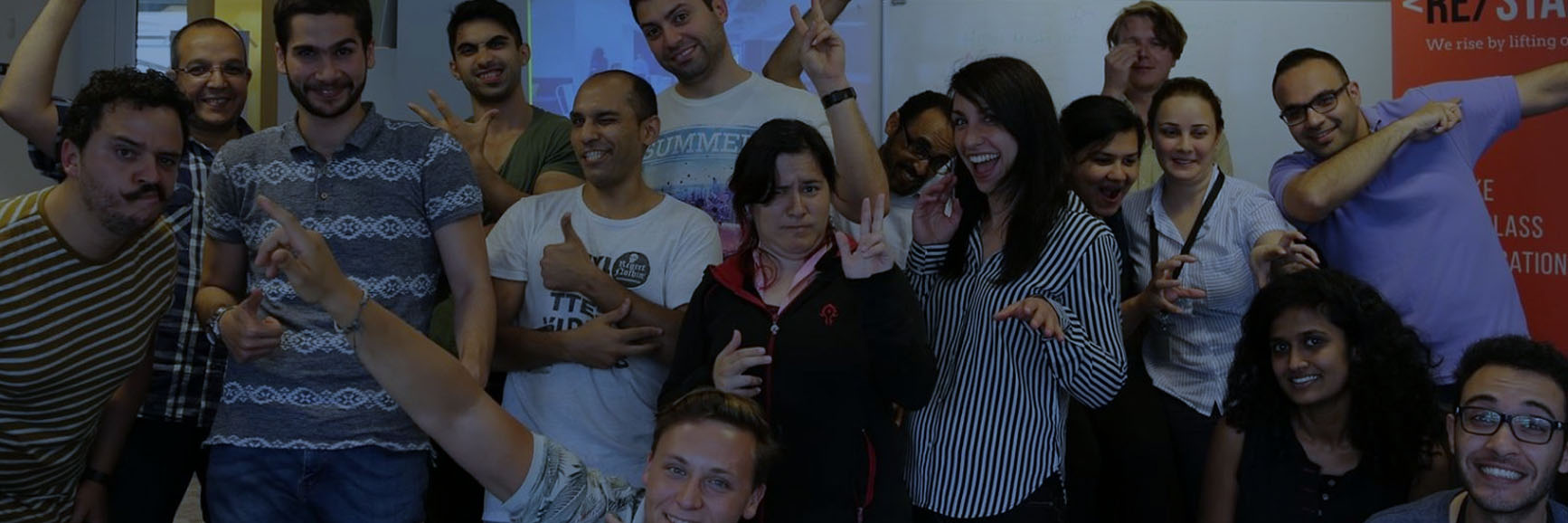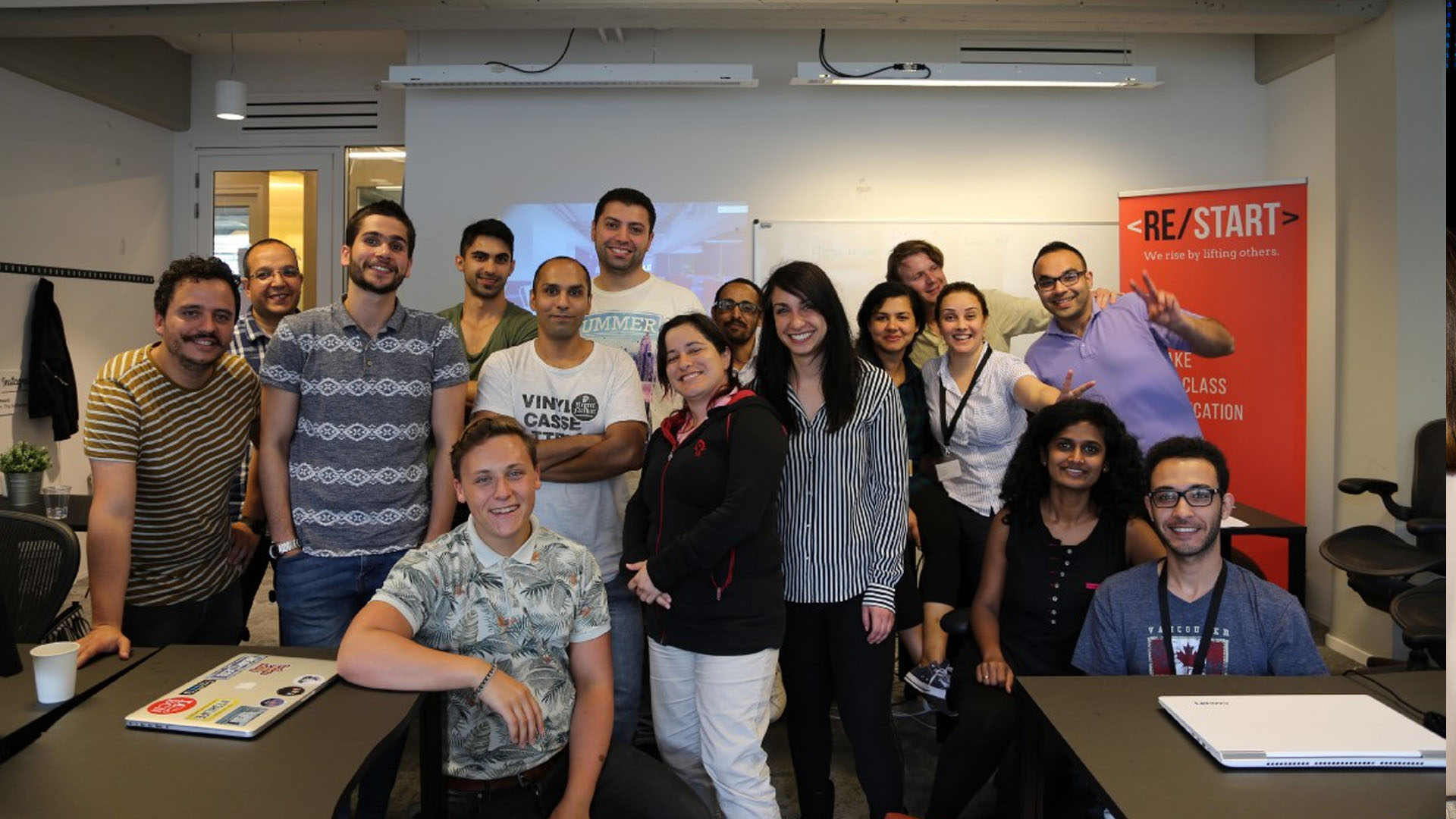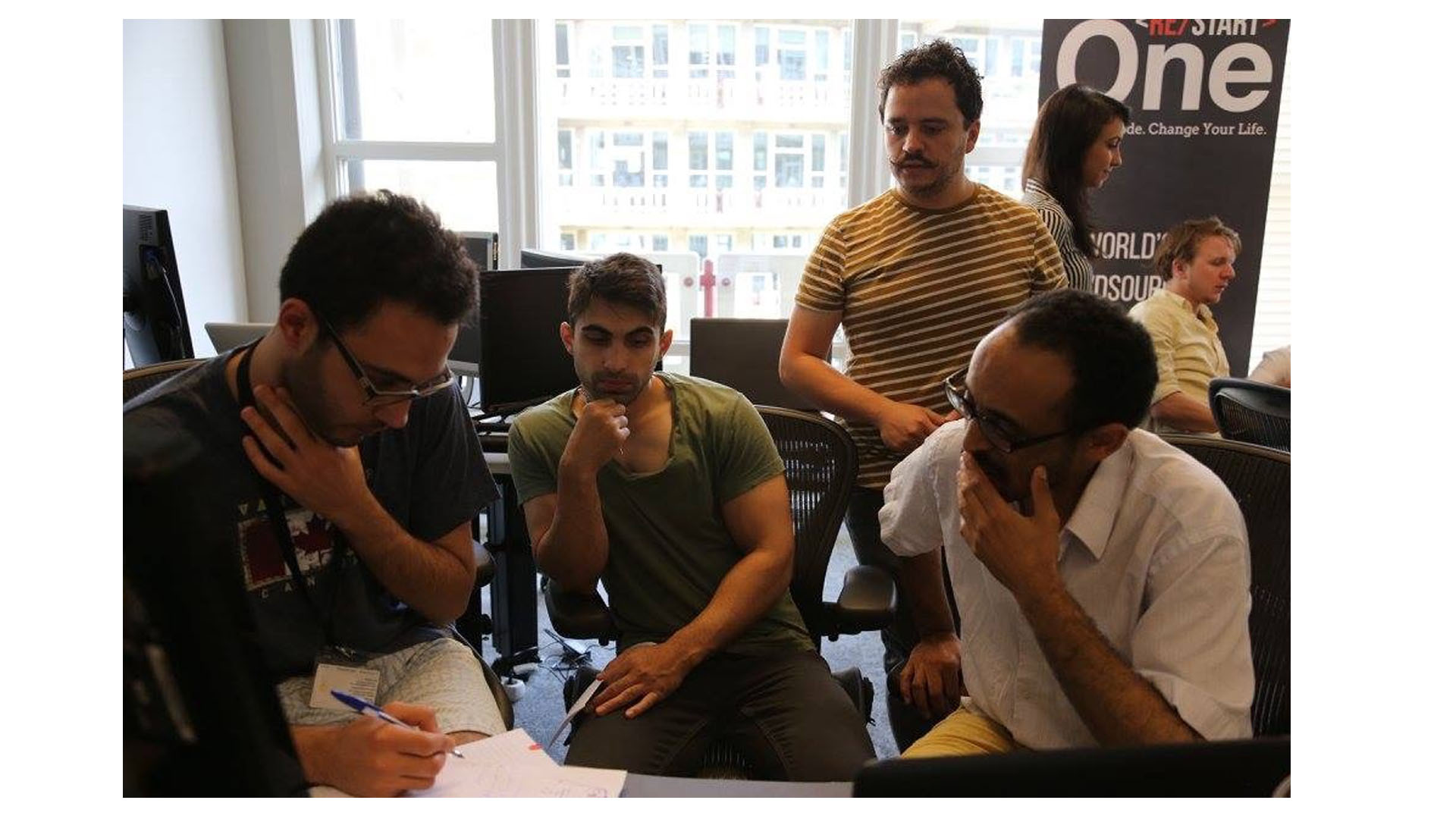
Each year, Booking.com employees have the opportunity to spend a day working on a local community project. Booking Cares is a volunteer program focused on destination improvement by supporting sustainable tourism initiatives and helping local organisations and startups to make a positive impact globally.
This year, one of our Booking Cares projects involved delivering a UX masterclass at Restart Network, a crowdsourced school for refugees and underprivileged people based in Rotterdam. They aim to kickstart careers in technology by creating an intensive one-year technology program to teach their students the fundamentals of full-stack web development.
We jumped at the chance to help.
My colleagues Esteban García and Richard Omollo, and I, were excited by this project and the fact that we could play a small part in offering people a real opportunity to restart their lives. We felt grateful to get the chance to help the school by sharing our knowledge and to learn from people with a different background and life experience. When you start working at Booking.com you find out that diversity is one of the company’s biggest strengths — it allows you to open your mind, change your way of thinking, and enjoy learning something new every day from people that are different from you.

Introduction to UX
Since the Restart Network school mainly focuses on coding, we thought that hosting an interactive masterclass on User Experience might be of value to the students. We started by explaining what UX is, the difference between UX and UI, and why the ‘design thinking’ process is so important for any project.
By asking them to consider the problems they encountered on their way to the school, we began to encourage a critical way of thinking, even when discussion turned to ‘wicked problems’ (problems that are difficult or impossible to solve due to incomplete, contradictory, or changing requirements that are often difficult to recognise).
Problem solving
We explained the four aspects of UX problem solving:
-
What: What is the problem that you are trying to solve?
-
Who: Who is affected by this problem or who are you solving it for?
-
How: What is the proposed solution to the problem?
-
Outcome: What do you expect to happen when you solve this problem?

Find a challenge
Then, after an explanation of the basics, we formed teams and asked each one to identify some problems they wanted to work on during the day. It was interesting to see how different the problems were, ranging from the very generic to far more specific, such as losing weight, time management, health, war, learning algorithms, and so on. Next, we asked each team to select one problem and turn it into a challenge.
User research
It is fundamental to understand who you are designing for before you begin to think about solutions to a problem. We demonstrated to the students how to conduct a user research session, where we ask users a lot of questions to gather data and understand why they experience the problem (‘pain points’) and how they are currently solving it. We also dived into personas, the representation of a typical user, and scenarios, the context that helps designers to understand the main users’ flow. We then asked each team to create a persona to represent the typical user of the problem they wanted to solve.
Prioritization = Importance and Feasibility
After defining the problem to solve (what) and the target (who), it was time to think about solutions. We were amazed to see how many ideas the students came up with! We asked them to rate each idea on a scale of 1 to 5 for two categories: Importance and Feasibility. It is important to understand what the impact of each solution will be, but at the same time assess what is actually going to be worth the time and effort.
Importance: Is it worth doing? What is the impact of this idea? How many people will enjoy it?
Feasibility: How much time do I need to do it? How many people will be involved? How much effort will it take?
Anything of high importance and high feasibility must be done.
After that we explained some of the basics of UI design, focusing on design principles such as consistency, hierarchy, negative space, readability, and simplicity, and asked them to sketch a quick mockup of their idea.
